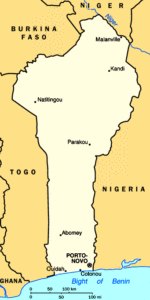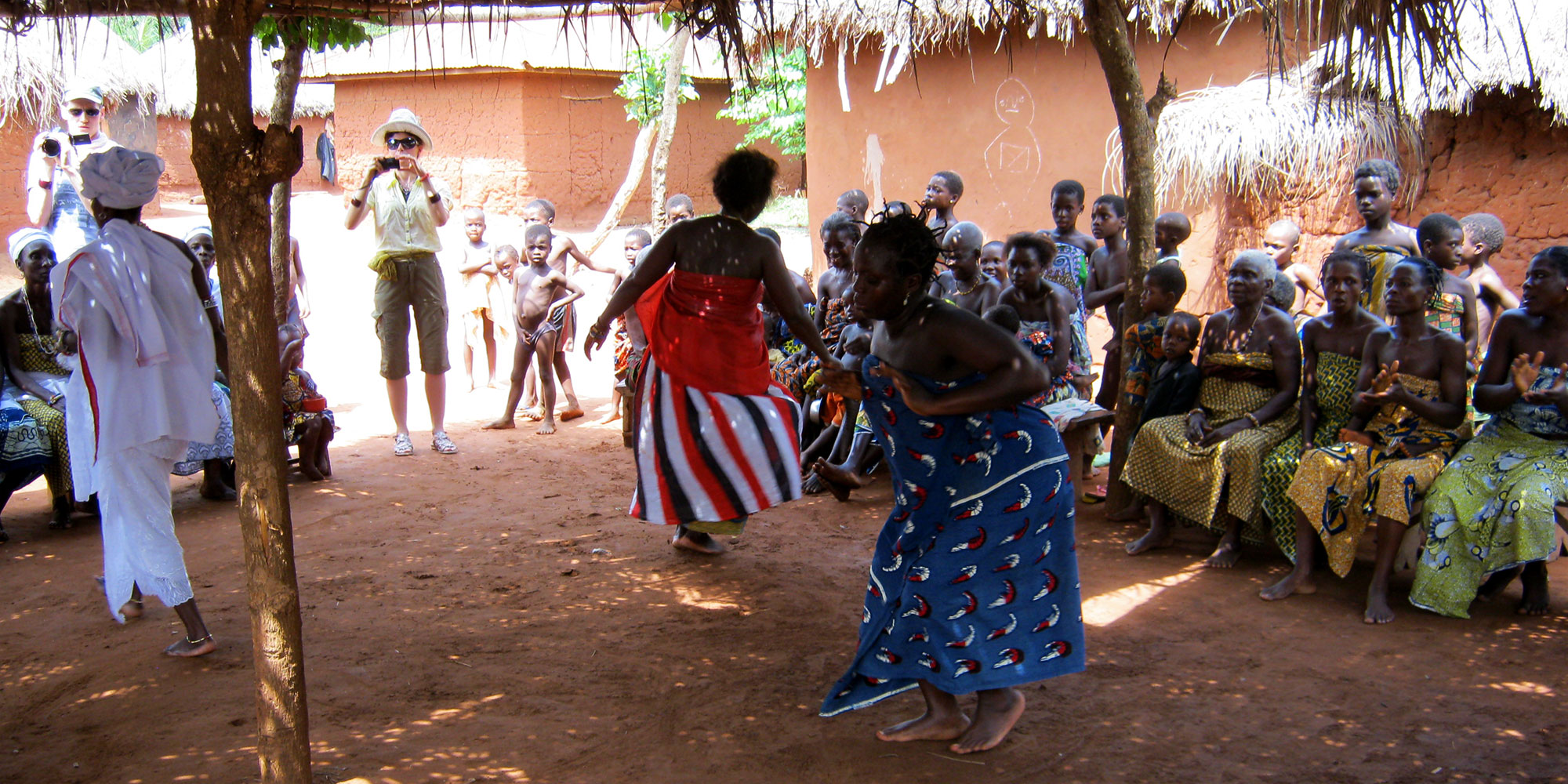-
Email: info@blastours.com
Discovering Benin
Benin is one of the more stable countries in Africa and occupies a narrow strip of land rich in culture and tradition. The country is famous for an annual voodoo festival in Ouidah, Gelede Mask dances, Zangbeto ceremony, Ganvie, the Pendjari National Park and many more.
 Benin is situated in West Africa on the northern coast of the Gulf of Guinea. It is bordered in the north by Niger and Burkina Faso, in the east by Nigeria, in the west by Togo, and in the south by the Atlantic Ocean.
Benin is situated in West Africa on the northern coast of the Gulf of Guinea. It is bordered in the north by Niger and Burkina Faso, in the east by Nigeria, in the west by Togo, and in the south by the Atlantic Ocean.
The capital of Benin is Porto-Novo, but the seat of government is in Cotonou, the country’s largest city.
Benin has four geographical regions. A flat narrow strip runs along the gulf coast. Further north, flat lowlands turn into a network of swamps and lagoons. In the country’s north, dense vegetation covers flat lands that gradually rise into broad plateaus and small groups of hills. In the northwest, Benin is dominated by the Atakora Mountains, which rises as high as 3,000 feet. The northeast, meanwhile, consists of fertile plains.
The coastal strip is sandy with coconut palms. Beyond the lagoons of Porto Novo, Nokoue, Ouidah and Grand Popo is a plateau rising gradually to the heights of the Atakora Mountains. From the highlands run two tributaries of the Niger, while southwards the Ouémé flows down to Nokoue lagoon. Mono River flows into the sea at Grand Popo and forms a frontier with Togo.
Climate
For the most part, Benin is very hot and humid, especially in the south. Like most other West African countries, there are two dry and two rainy seasons. From October to April, Benin is dry, whereas it is rainy from May to September.
South of Savalou, especially in the west, the climate is typically equatorial – hot and humid, with a long dry season from December to March, in which the dry harmattan blows in the northeasterly to southwesterly direction. The great rains fall from March to July; there is a short dry season from July to September and a short wet season from September to November. In the southwest, average rainfall is considerably lower and the dry season longer. Northern Benin has a typical tropical climate, with only one wet season (May to September, with most rain in August) and a hot dry season in which the harmattan blows for three or four months. The highest midday temperatures are in January and the lowest in August, but throughout the year the range between midday and night temperatures is great, as much as 15.5C (28F) in the hot season. Although rainfall, which is highest in central Benin (53 inches), decreases as one moves northward, it remains high (40 inches) in most of northern Benin.
The best time to visit the Southern area is from December to March and July/August while visiting period for the Northern part of the country is best between December and April.
People
The country is as colourful and vibrant in its ethnic diversity as it is in its music, art and dance.
Among the 6.5 million population of Benin, there are more than 20 different ethnic groups living in general harmony, each with a distinct language, history and traditions. Benin remains extraordinarily diverse, with the population divided unevenly between a Christian majority and a Muslim minority, overlaid by an intermingling of traditional worship and custom. Several religions are practiced in Benin. Animism is widespread (50%), and its practices vary from one ethnic group to the other. Arab merchants introduced Islam in the north and among the Yoruba. European missionaries brought Christianity to the south and central areas of Benin. Muslims account for 20% of the population and Christians for 30%. Many nominal Muslims and Christians continue to practice animistic traditions. It is believed that voodoo originated in Benin and was introduced to Brazil and the Caribbean Islands by slaves taken from this particular area of the Slave Coast.
The official language is French. However, many ethnic groups have their own languages: Bariba and Fulani are spoken in the north, Fon and Yoruba in the south. Some English is also spoken.
Normal courtesies are appreciated; it is customary to shake hands on arrival and departure.
On the whole Benin is a safe and ordered destination with great care being taken to conserve and protect the country’s tourism industry.

History of Benin
Benin was once part of the Kingdom of Dahomey, which spread out over large parts of Western Africa.
During the 16th and 17th centuries, three kingdoms flourished in the south: Ardra, Jakin, and Dahomey. The first European contact was around 1500. Contact was made with the kingdom of Dahomey. One of its kings saw the advantage of trading with the Europeans and sought to expand his kingdom to the coast; this task was eventually achieved by his descendant Agadja in 1727. The Africans traded people as slaves in return for cloth, pots, plates, liquor, tools, and guns.
In the mid-18th century, the Yoruba kingdom in the east called Oyo seized the kingdom of Dahomey and forced it to pay tribute for more than a hundred years. In the mid-19th century, the Oyo was overthrown and Dahomey re-established its dominance. Around this time, trade relations were established with the French.
In the late 19th century, a series of wars were waged between the kingdoms in the south. In the turmoil, the French took the opportunity to seize the territories and colonize the area.
The French takeover and colonisation came in 1872. In 1904, the territory was incorporated into French West Africa as Dahomey. On 4 December 1958, it became the République du Dahomey, self-governing within the French community and gained full independence from France on 1 August 1960.
Benin was the first country in the 1990s to successfully effect the transition from dictatorship to a pluralistic political system. Today, Benin is held in high regard in the international community and its model democracy has been widely acclaimed.
Videos from our Channel


